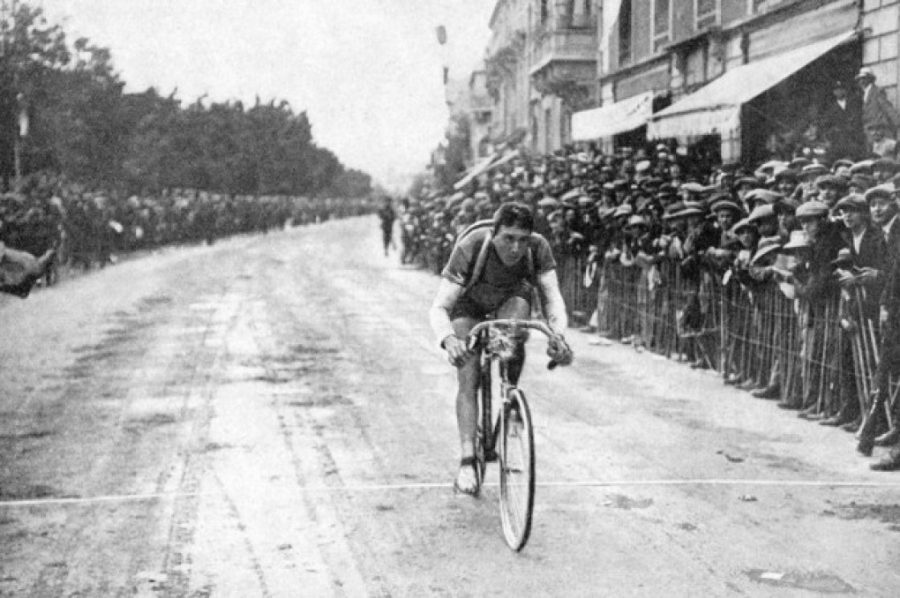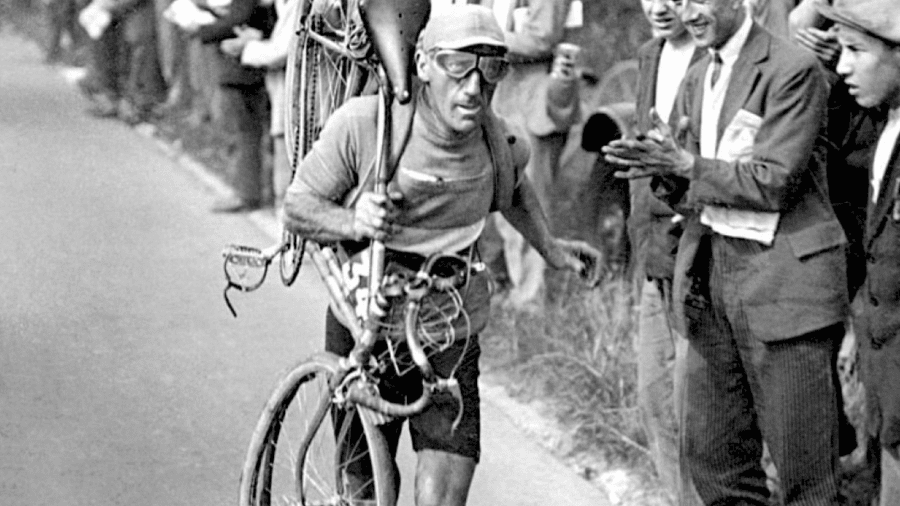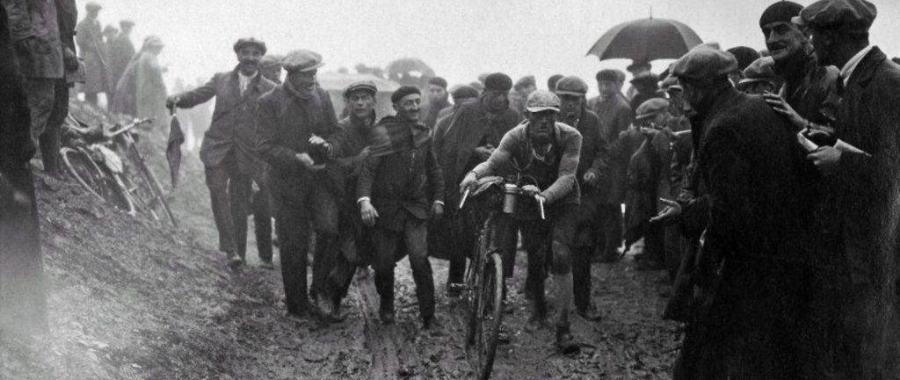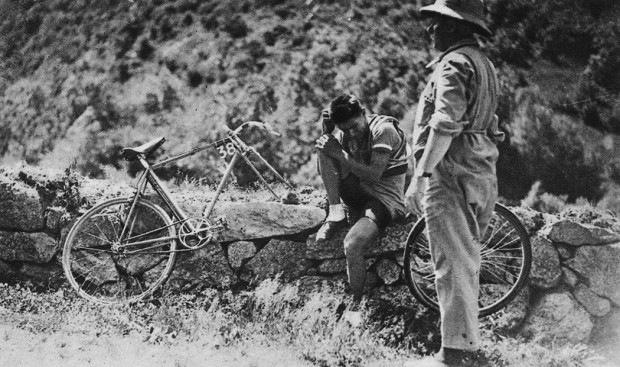The 10th stage of Tour de France 1926 is often dubbed as the toughest stage ever in the history of the race. The 326 km long route between Bayonne and Luchon on the 6th July 1926 went down in history also as one of the most chaotic ones thanks to the extreme weather conditions in the Pyrenees.
The stage included the traditional quartet of the most iconic Pyrenees ascents: Aubisque, Tourmalet, Aspin, and Peyresourde. Before the stage Gustave Van Schlembrouck (one of the famous smoking cyclists from 1927) led the general classification. But he was expected to drop from the top as soon the peloton would arrived in the high mountains. Ottavio Bottecchia, the winner of the two most recent editions, Bartolomeo Aymo, a rider with a very solid performans during the 1920s, also future two-time Tour de France winner Nicolas Frantz were among the riders expected to deliver a great performance during the stage.
Journalists decribed the stage as infernal. Rain, snow, and fog made the race more difficult, not the mention the fact that in those days the mountain roads weren't asphalted yet.
Among these extreme circumstances Belgian cyclist Lucien Buysse crossed the finish line after 17 hours and 12 minutes. The second cyclist, Bartolomeo Aymo arrived 25 minutes later. Only the top10 riders arrived within an hour, while the man in the yellow jersey lost huge amont of time, finished the day in 20th place with a gap of 1 hour 50 minutes.
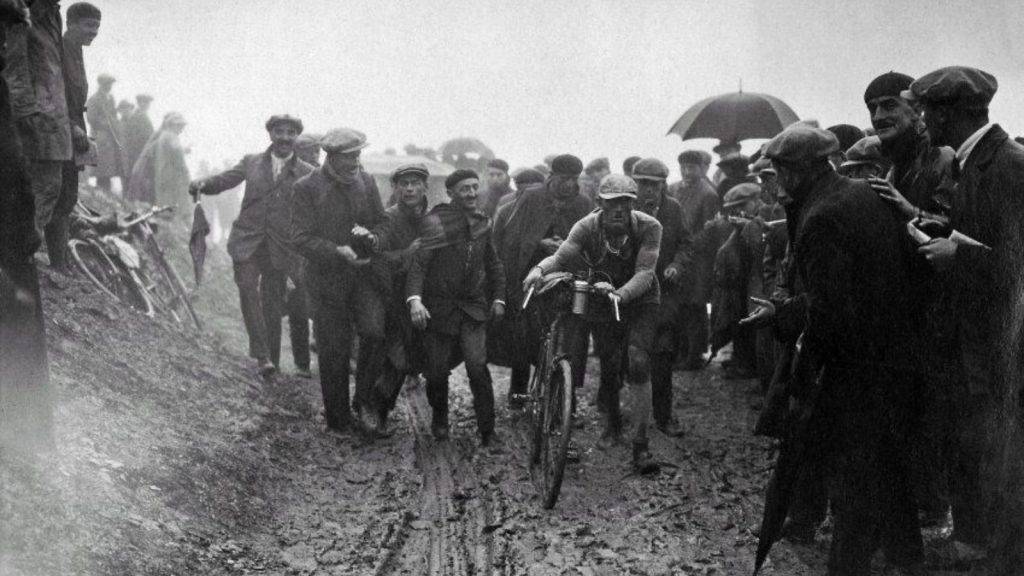
To understand the dificulties the participants had to face with, the route was included in the program of Tour de France in 1913, and it took Philippe Thys "only" 13 hours to finish the stage.
During the day many riders were seeking shelter in taverns or even in private homes, which made the organizers' intention to gather the "lost"riders a bit more difficult. Amog the cyclists who had to give up the race was Ottavio Bottecchia.( Probably nobody thought this would be his last ever Tour de France stage. When the next edition started in next summer, he was already dead. )
At midnight ( let's not forget the race started in the middle of the previous night) 47 riders arrived, mostly in cars and buses sent by the organizers to pick them up.
Lucien Buysse, who lost his daughter right before (or, according to other sources, during the early days of) the race, took the yellow jersey, and secured his leading position with another victory on the next stage. He won the Tour de France ahead of Nicolas Frantz with an astonishing 1 hour 22 minutes and 25 seconds gap.
Stage 10 of Tour de France 1926 remains definitely one of the most memorable days in the Pyrenees in the history of the most famous road cycling race.
MORE ROAD CYCLING STORIES FROM THE 1920S
Faces from the peloton: Jean Alavoine
Until the 3rd July 2024, when Mark Cavendish claimed his 35th Tour de France stage victory, French cyclist… Read More »Faces from the peloton: Jean Alavoine
Faces from the peloton:Victor Fontan
A cyclist running while carrying his bike on his shoulder. Surely, you’ve seen this vintage cycling image several… Read More »Faces from the peloton:Victor Fontan
MORE STORIES FROM THE PYRENEES
The toughest Tour de France stage ever
The 10th stage of Tour de France 1926 is often dubbed as the toughest stage ever in the… Read More »The toughest Tour de France stage ever
René Vietto’s sacrifice ( Tour de France 1934)
In 1934, Tour de France produced one of the most legendary and emotional moments in cycling history when… Read More »René Vietto’s sacrifice ( Tour de France 1934)
